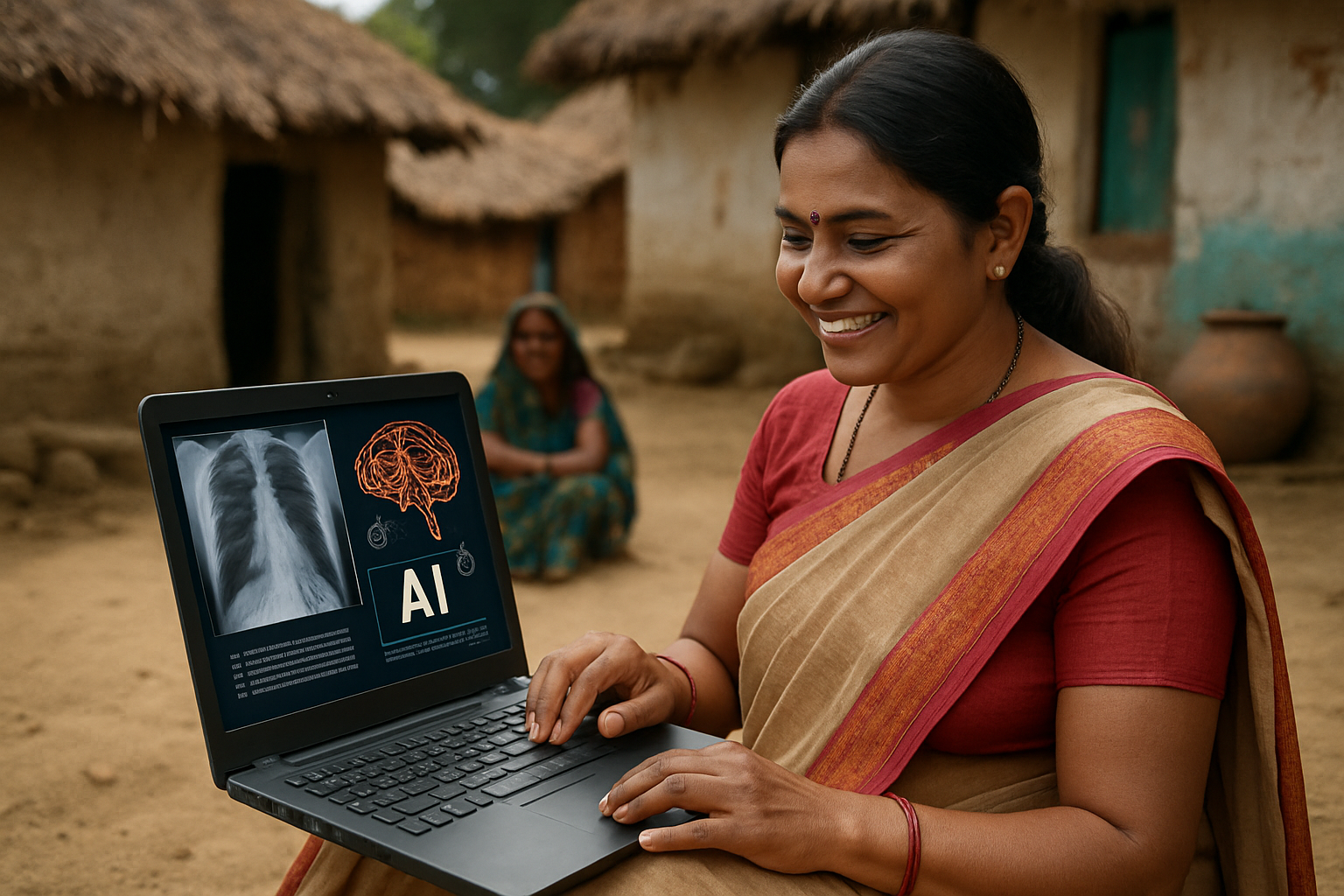Quick Take
- Community health workers use AI-powered smartphones for diagnostics in Indian villages
- CureBay raised ₹175 crores ($21M) serving 90,000 rural subscribers across 150+ e-clinics
- Phone-based retinal scans detect diabetic retinopathy preventing blindness
- Rural healthcare startups attracted ₹780+ crores ($93M+) in recent funding rounds
- Technology empowers existing networks rather than replacing village health workers
Healthcare Technology Reports show that 70% of India’s rural population now has access to specialist diagnostics through AI-powered mobile tools. This shift is transforming village healthcare delivery, especially for families who previously had to sacrifice life savings for single city hospital visits.
Healthcare Divide Creates Technology Opportunity
The healthcare gap between urban and rural India presents massive business opportunities while leaving chronic conditions undiagnosed until they reach critical stages. City hospitals draw medical tourists with world-class treatments, but rural areas continue struggling with basic diagnostic access.
Families often sacrifice their savings for single city hospital visits. Travel costs, lost wages, and consultation fees devastate household budgets. This financial burden affects millions who delay essential healthcare, creating significant demand for accessible diagnostic solutions.
Smartphones Transform Village Diagnostics
Community health workers now use smartphones as diagnostic tools through AI integration. These trusted village-based workers can access cloud-based AI engines for accurate medical insights. The technology transforms basic phones into retinal scanners and digital stethoscopes.
Using low-cost lens attachments, phone cameras capture retinal images that AI algorithms analyze for diabetic retinopathy. This early detection helps prevent blindness and identifies patients who need specialist referrals. The approach eliminates costly travel for routine screenings.
Phone microphones detect respiratory conditions like pneumonia and tuberculosis. AI analyzes breathing sounds and identifies disease-specific acoustic signatures. This helps screen individuals who require costly hospital visits before conditions worsen.
Funding Surge Validates Rural Healthcare Model
Startups in this space have attracted substantial funding rounds, demonstrating investor confidence. CureBay raised ₹175 crores ($21 million) in Series B funding led by Bertelsmann India Investments. The company operates more than 150 rural e-clinics primarily in Odisha and Chhattisgarh.
“The capital will help us scale technology, talent, and reach to bring dignified, affordable healthcare to the last mile,” said Priyadarshi Mohapatra, founder and CEO of CureBay.
CureBay employs over 1,000 community health workers who facilitate teleconsultations and diagnostic services. The company has 90,000 people actively subscribing to their preventive health packages.
The rural healthcare technology sector continues attracting strong investment. Medical imaging startup Qure.ai raised ₹541 crores ($65 million) in Series D funding. Dermatology startup Cureskin secured ₹167 crores ($20 million) in Series B funding. Dozee received ₹67 crores ($8 million) to expand its AI-powered vital signs monitoring.
Force Multiplier Model Enhances Existing Networks
The approach enhances existing community health worker networks rather than building new hospitals or replacing doctors. Health workers receive mobile devices and AI diagnostic training. This creates a force multiplier effect across rural infrastructure.
User experience design focuses on simplicity for workers with limited technical knowledge. Systems operate reliably in rural settings where internet connectivity remains inconsistent. Offline functionality allows diagnostic work to continue without internet access.
Data synchronizes with cloud systems when connectivity returns. This ensures continuous healthcare delivery even in isolated village locations.
Implementation Challenges Require Strategic Solutions
Trust remains the most significant implementation challenge in rural communities. Villagers expect human doctors, making technology-based diagnoses seem foreign or suspicious. Local health workers serve as crucial intermediaries between communities and AI systems. They build acceptance through established relationships.
Proper training ensures health workers understand tool capabilities and limitations. Workers must apply technology correctly and make informed decisions based on diagnostic results. Without adequate training, misuse or misunderstanding could undermine effectiveness and community trust.
Connectivity issues affect many remote villages despite offline capabilities. While apps process data locally, periodic internet access improves system performance and updates. This requires strategic infrastructure planning.
Financial Benefits Extend Beyond Individual Care
The financial benefits extend beyond individual families to workforce productivity. Early diagnosis prevents costly treatments and hospitalizations down the line. Healthier rural populations create stronger local economies through improved productivity.
This transformation represents a paradigm shift in healthcare delivery models. Geographic limitations no longer restrict access to specialist diagnostic tools. Simple, accessible technology makes healthcare more equitable across rural India. The model proves scalable across different medical conditions and rural settings.
Strategic Implications for Business Models
Success in diabetic retinopathy and respiratory condition detection opens opportunities for other diagnostic applications. Healthcare becomes accessible regardless of location through mobile technology integration. This validates the rural market potential for technology companies.
Businesses serving rural markets can learn from this force multiplier approach. Empowering existing networks proves more effective than replacing established systems. Technology adoption succeeds when it enhances rather than disrupts trusted relationships.
This model demonstrates how strategic technology integration can unlock previously underserved markets while delivering measurable social impact.






